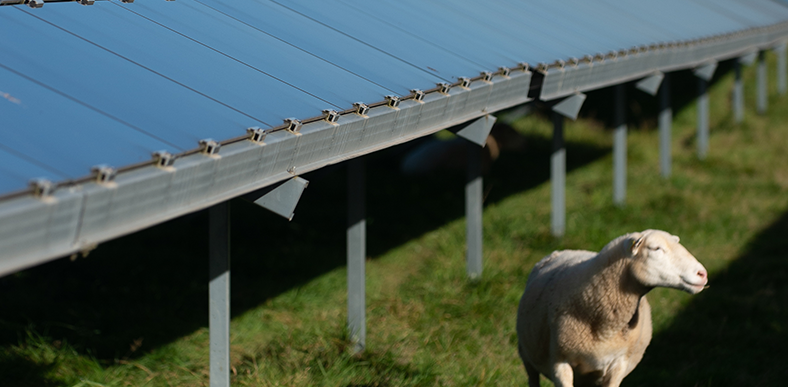Understanding sheep agrivoltaics in 5 points!

1) How does it work?
Sheep agrivoltaics involves combining photovoltaic electricity production and sheep farming on the same land. Solar panels are installed in such a way as to leave enough space for the sheep to graze freely. This approach ensures a balance between both activities.
2) On which lands does Photosol develop its agrivoltaic activity?
Photosol prioritizes agricultural lands where livestock farming is historically present or where it can be reintroduced. These sites are chosen to maximize the complementarity between photovoltaic production and the needs of farmers.
3) What does an agrivoltaic plant look like?
An agrivoltaic plant consists of rows of elevated solar panels that allow animals to move freely. The infrastructure allows light to reach the grass, ensuring optimal accessibility for both the sheep and the farmers.
4) How do the photovoltaic plant and agricultural production complement each other?
The solar panels provide a natural shelter for the sheep, protecting them from the weather (rain, excessive heat). In return, the sheep help maintain the land by grazing the vegetation, thus reducing the need for mechanical maintenance. This symbiosis enhances the land while maintaining its agricultural purpose.
5) What are the advantages of agrivoltaics?
Designed around and for agricultural activity, agrivoltaic installations maintain a viable and sustainable agriculture and are adapted to each farm. They also produce low-cost and low-carbon electricity. Agrivoltaics offers immediate and concrete benefits for farmers:
- Additional income: Combining agricultural production with clean energy guarantees stable and sustainable profitability for the farm.
- Contribution to animal welfare: Partial shade provides protection against extreme heat and weather. Perimeter fences around the park protect the farm from predators.
- Preservation of pastures and grazing land: In response to climate change and recurrent droughts, our agrivoltaic parks help maintain quality grass growth throughout the year. (INRAE 2020)
- Protection from climatic hazards: The panels act as a shield, reducing damage to crops caused by hail and heavy rains. In summer, the panels provide partial shade, reducing underlying temperatures and protecting crops or livestock from burns and thermal stress. In winter, they retain heat under their surface, creating a slightly warmer environment, limiting the risk of frost damage to crops.
